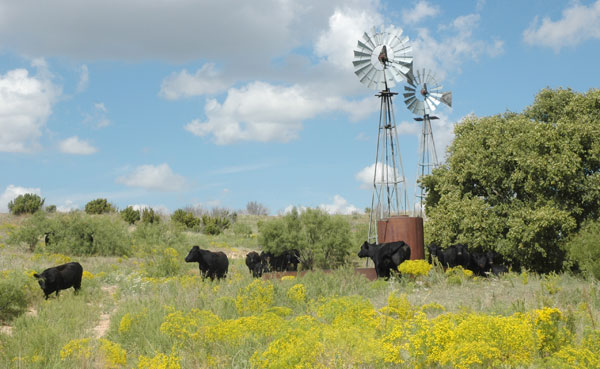Looking to lease your land? Here are some options to consider
If you’ve got more pasture than cows to graze it, here are some leasing options to look at.
April 26, 2018

By Dan Childs
Drought has once again blighted a large part of the Southern Plains and Southwest. Meaning producers there will be looking for summer pasture. Or maybe there’s a young person looking to get into the beef production business and all they need is a mentor and some pasture to run on.
Whatever the reason, if you’ve got more forage than cows to eat it, you can still use that land for beneficial beef production. Landowners who choose not to operate their land have several options when considering lease agreements. Two factors usually determine which option a landowner will choose:
How much the landowner wants to be involved in management.
How much risk the landowner feels comfortable taking.
Typically, the greater the risk exposure, the greater the potential return. However, higher risk exposure can also result in a lower rent in some years.
Over the long term, the net rent should be higher when taking greater risks compared to lower-risk alternatives, though the landowner should expect fluctuations in annual rent. This may not be acceptable to some landowners who desire a consistent revenue stream each year.
Forage production land
Leasing out forage-producing land is a bit more complex because of the different uses and types of forage grown on the land. Only a select few of the more common options will be discussed.
When renting land for grazing cows and calves, the most common option is a cash rent by the acre. Issues in the agreement would typically address such things as stocking rate, maintenance of fences and improvements, weed and brush management, lease terms, and the rate per acre.
Since the productivity of land varies across properties, a more equitable arrangement is to base the rent on a rate per animal unit of carrying capacity.
The rate per animal unit is determined by the value per hundredweight (cwt) of a 500-pound steer calf as reported by the USDA Market News for the Oklahoma National Stockyards auction market the first week of August. The first week of August is used because that week typically represents near the average price for the year, not the spring high or the fall low. The value per cwt becomes the annual rate per animal unit.
For example, if the Market News reported a 500-pound steer calf to be $200 per cwt ($2 per pound), the annual rent per animal unit would be $200. A lease could be designed such that $100 per animal unit is paid in January and the remaining portion is paid on Sept. 1, after the early August steer price is known. Care for the animals would be the responsibility of the cattle owner along with other responsibilities agreed to in the agreement.
Lease agreements for growing cattle commonly referred to as stockers are typically based on gain or rate per head per day. In some areas of the country, rates are based on a grazing season and often include care.
When the rate is based on gain, a rule of thumb is one-half of the value of gain. Value of gain is usually calculated by comparing the current price per head of the animal at the beginning of the graze period to the price per head of the heavier animal at the end of the graze period. The price of the heavier animal is determined by using the Chicago Mercantile Exchange feeder cattle futures price for the month closest to, but not before the end of, the graze period multiplied by the expected end weight of the animal.
For example, the current price of a 600-pound steer is $1,000 per head. Assume the end of the graze period is July, and the animal is expected to weigh 800 pounds. Based on the August feeder futures, the expected price is $145 per cwt or $1,160 per head. Divide the difference of $1,160 and $1,000 or $160 by the difference in weight of 200 (800 – 600) pounds for a value of gain of 80 cents. One-half of 80 cents is 40 cents, which is the rate a landowner would charge for stocker cattle grazed on a gain basis including care.
Other items to negotiate would be how beginning and ending weights are determined, who absorbs death loss, who pays for fly control, mineral and any supplemental protein.
When weighing cattle is a problem, a rate per head per day is common. Rates per head per day will range from 1.5 to 2 times the gain rate per pound. If the gain rate would be 40 cents per pound, the daily rate would be 60 cents to 80 cents per head per day.
Any lease agreement should be written down, signed by both parties and dated. The most important reason for a written lease is to document what each party agreed to. Sometimes we forget what the agreement was. Written documentation will hopefully alleviate any misunderstandings. Even though there are reasonable and customary guidelines for many lease agreements, keep in mind that everything is negotiable.
Childs is senior agricultural economics consultant with the Noble Research Institute in Ardmore, Okla.
You May Also Like



